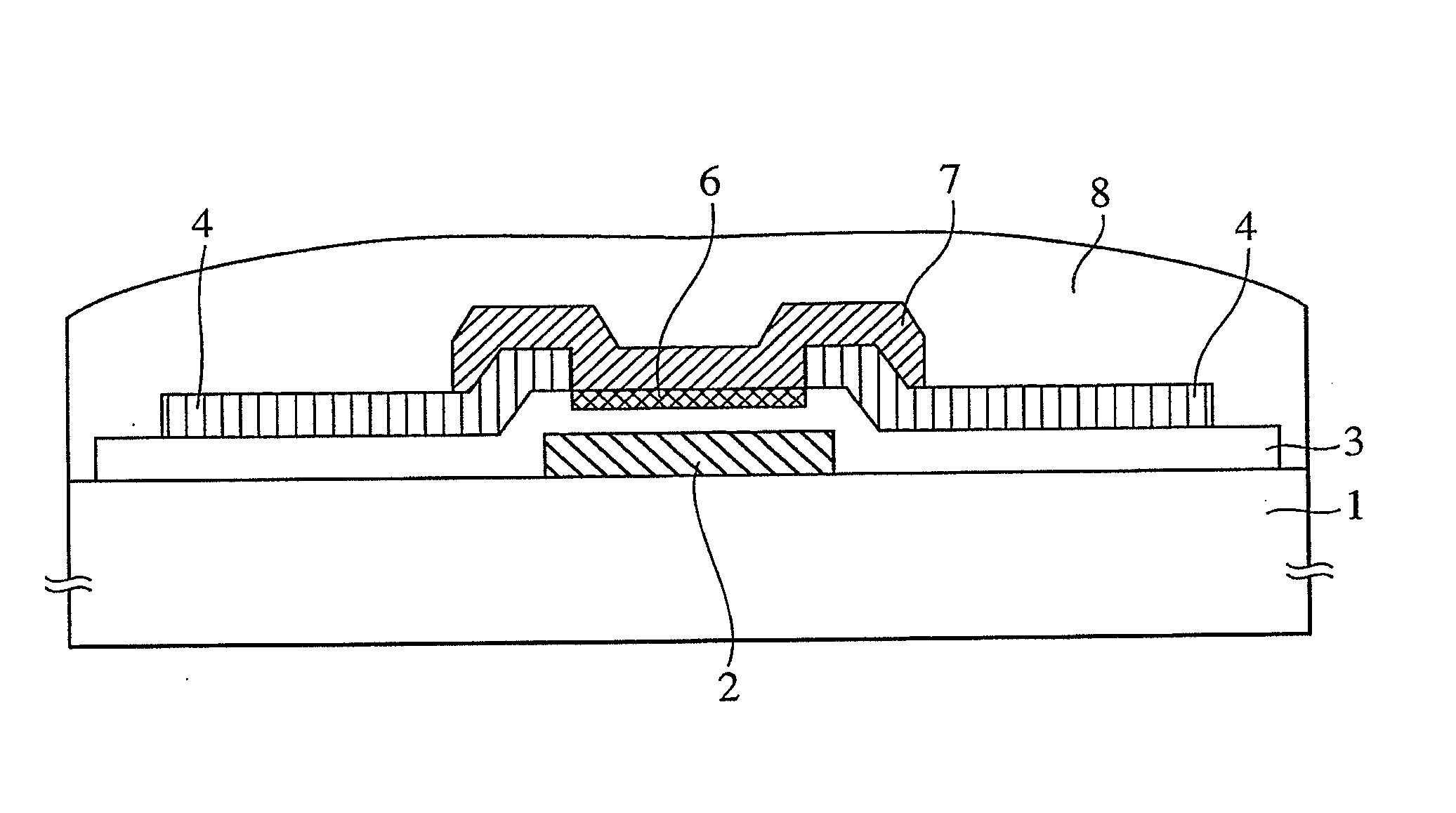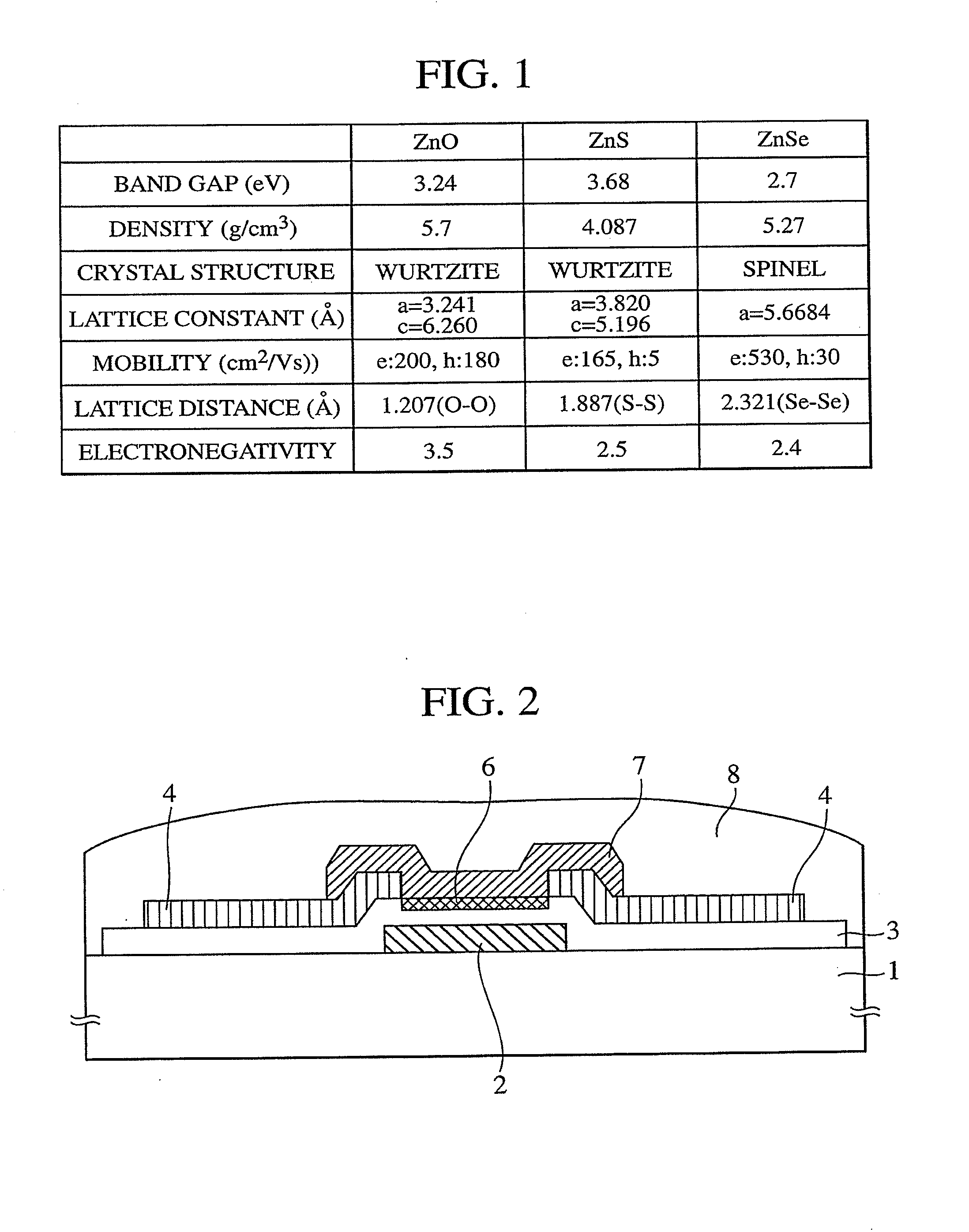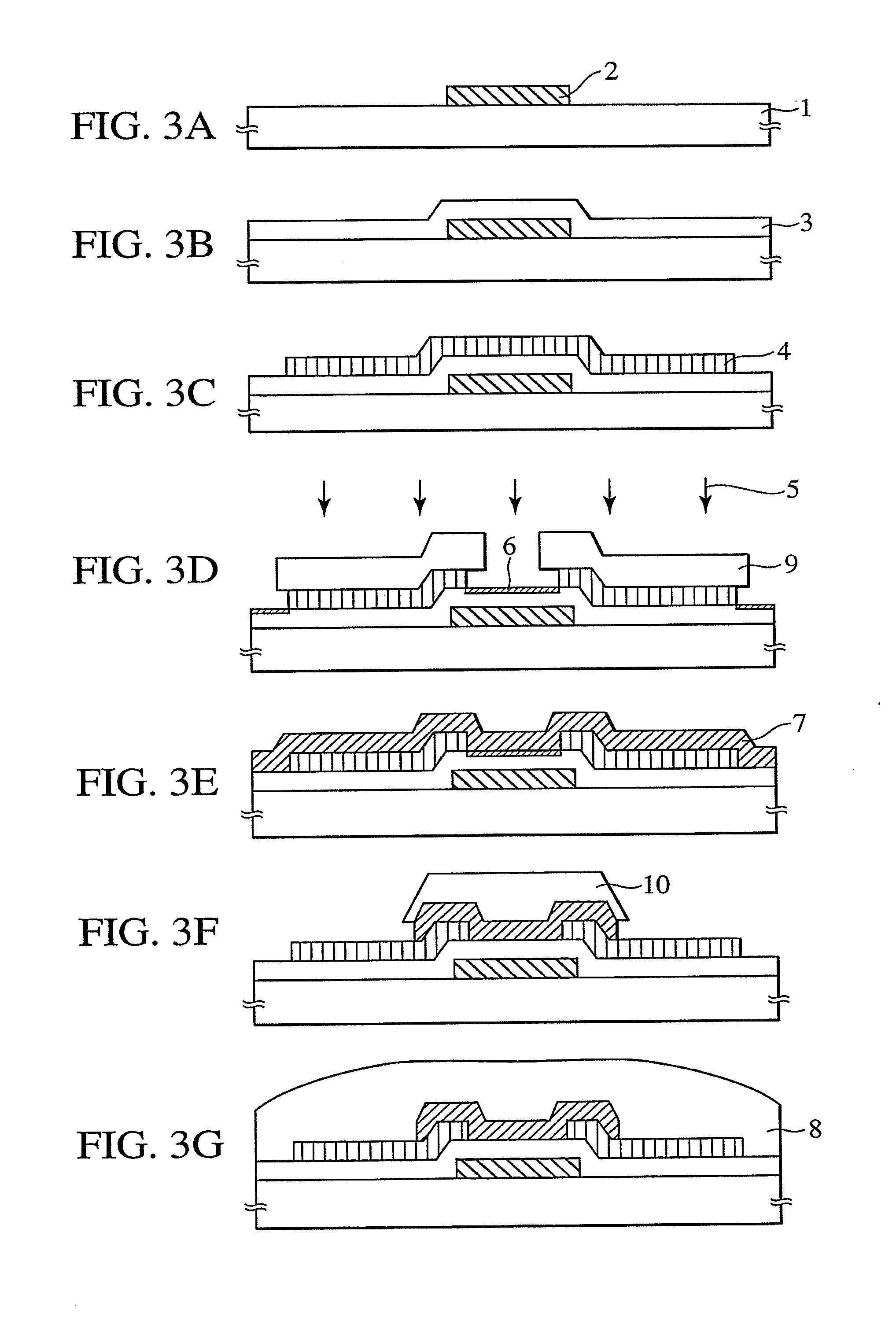Oxide Semiconductor Device and Surface Treatment Method of Oxide Semiconductor
a surface treatment method and semiconductor technology, applied in semiconductor devices, electrical devices, transistors, etc., can solve the problems of difficult application of organic el thin-film transistors in the future in view of process throughput problems, and difficult control of stoichiometric amount in the future. , to achieve the effect of reliable operation of display devices, flexible devices and other devices
- Summary
- Abstract
- Description
- Claims
- Application Information
AI Technical Summary
Benefits of technology
Problems solved by technology
Method used
Image
Examples
first embodiment
[0030]A structure of a thin-film transistor used for display and a manufacturing method according to a first embodiment of the invention are to be described with reference to FIG. 2 to FIG. 5. FIG. 2 and FIG. 3 are flow charts showing an example of cross sectional views of bottom gate type thin-film transistor and manufacturing steps thereof. FIG. 4 and FIG. 5 are flow charts showing an example of cross sectional views of top gate type thin-film transistor and manufacturing steps thereof. FIG. 6 and FIG. 8 are graphs for explaining the change with time of a threshold potential shift for showing respective effects. FIG. 7 and FIG. 9 are simple schematic views of circuits for applying them to devices respectively.
[0031]First, when a bottom gate type thin-film transistor as shown in FIG. 2 is formed, a support substrate 1, for example, a glass substrate is provided. Then, a metal thin-film as a gate electrode 2, for example, a lamination film of Al (250 nm) and Mo (50 nm) is formed by ...
second embodiment
[0040]Description is to be made to the structure of an HEMT (High Electron Mobility Transistor) and a manufacturing method according to a second embodiment of the invention with reference to FIG. 10.
[0041]First, a combination of a band structure so as to form a two dimensional electron gas layer 22 is selected and, for example, a multi-layer film 23 comprising, for example, zinc magnesium oxide / zinc oxide / zinc magnesium oxide is grown crystallographically by an MBE method or an MO (metal Organic) CVD method, a PLD (Pulsed Laser Deposition) method or the like above a semiconductor substrate 21 such as a sapphire substrate or a zinc oxide substrate. When the effect due to a substrate material or a polar surface is controlled, a buffer layer such as a zinc oxide layer or a zinc magnetic oxide layer grown on the surface of a semiconductor substrate at a low temperature condition of 200° C. or lower is sometimes disposed between the multi-layer structure 23 and the substrate 21. A gate i...
PUM
 Login to View More
Login to View More Abstract
Description
Claims
Application Information
 Login to View More
Login to View More - R&D
- Intellectual Property
- Life Sciences
- Materials
- Tech Scout
- Unparalleled Data Quality
- Higher Quality Content
- 60% Fewer Hallucinations
Browse by: Latest US Patents, China's latest patents, Technical Efficacy Thesaurus, Application Domain, Technology Topic, Popular Technical Reports.
© 2025 PatSnap. All rights reserved.Legal|Privacy policy|Modern Slavery Act Transparency Statement|Sitemap|About US| Contact US: help@patsnap.com



